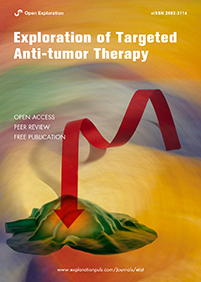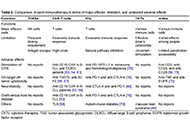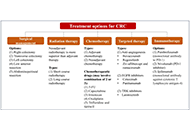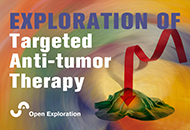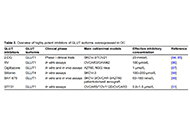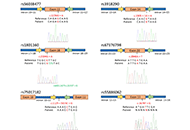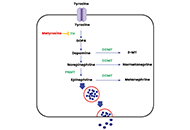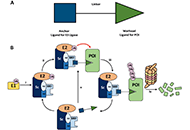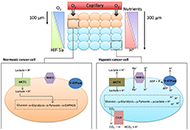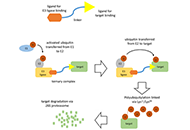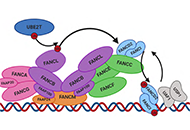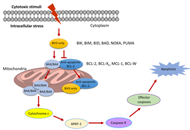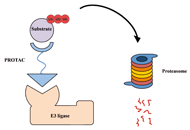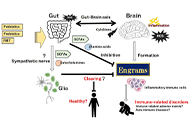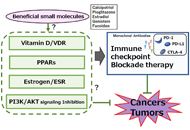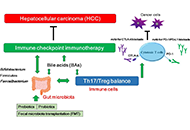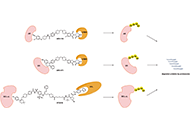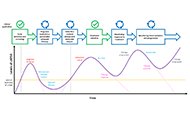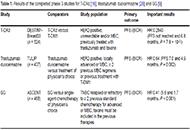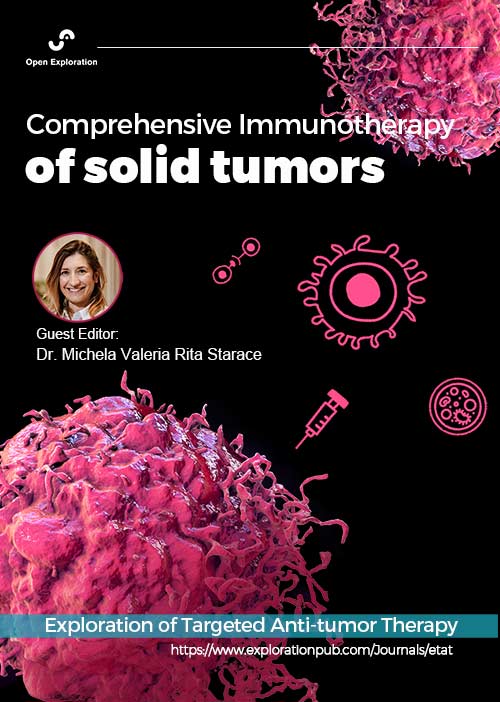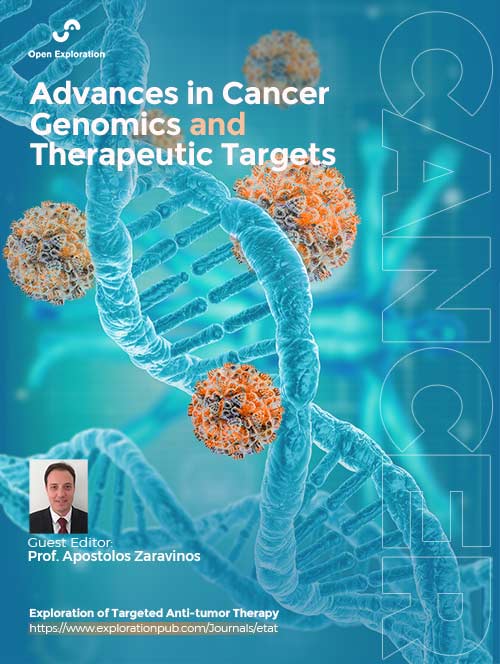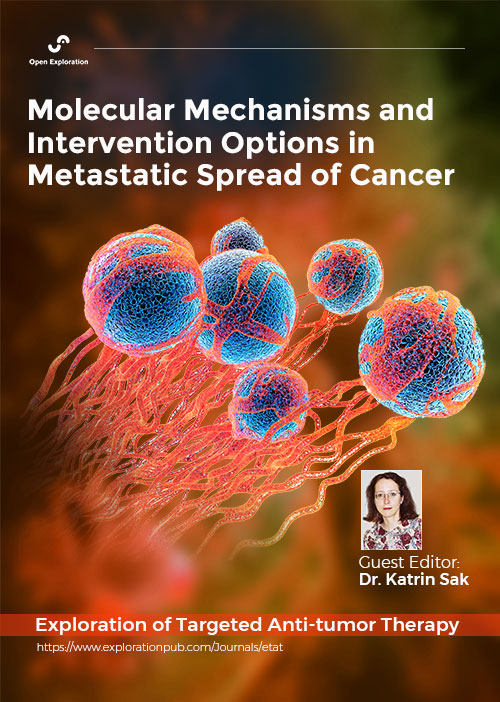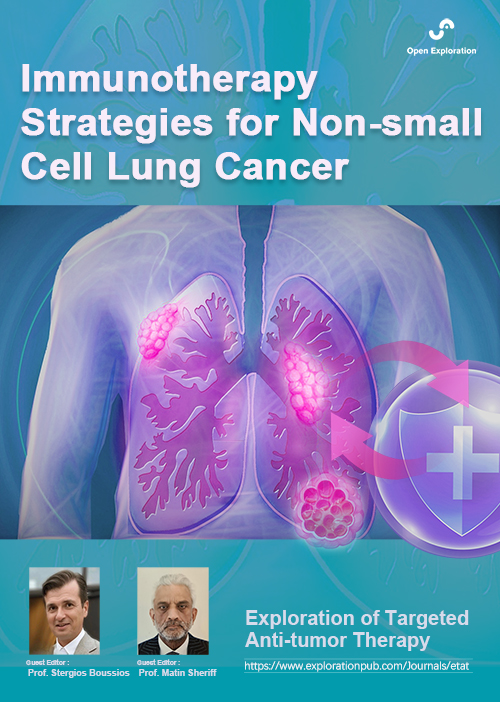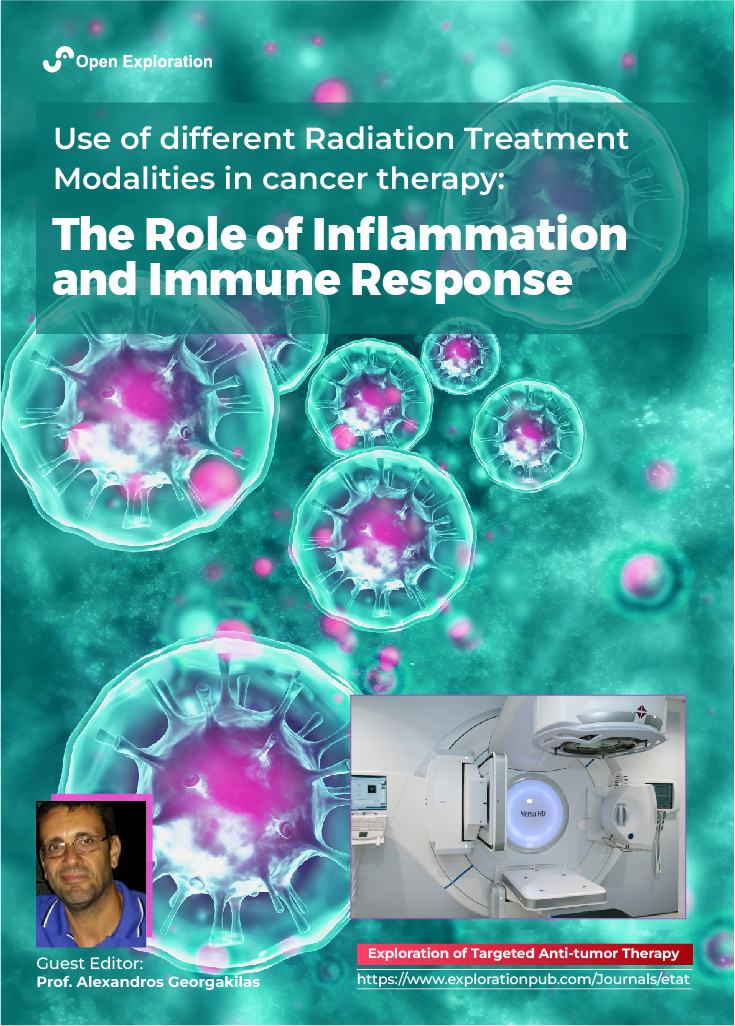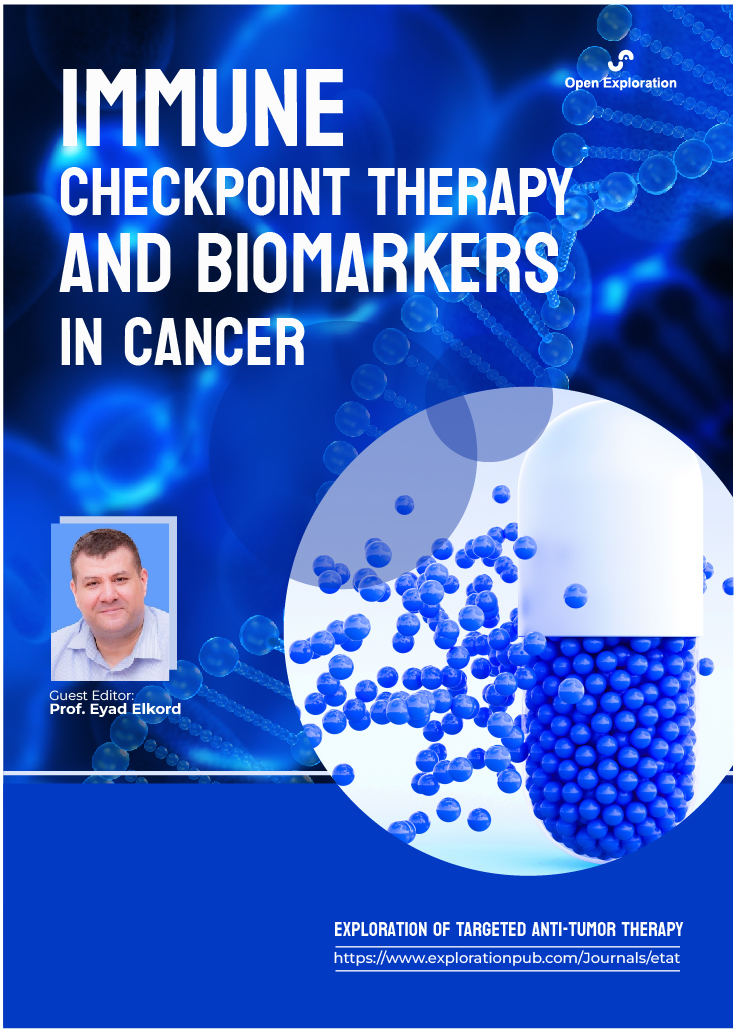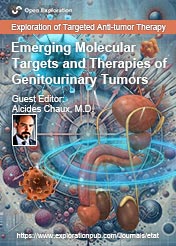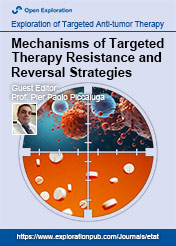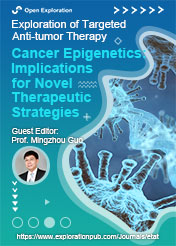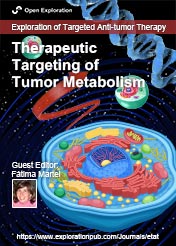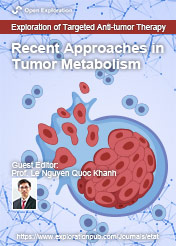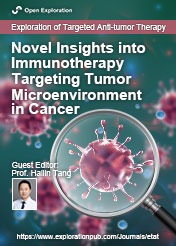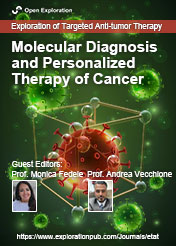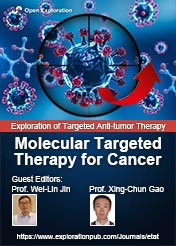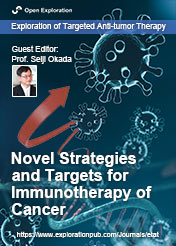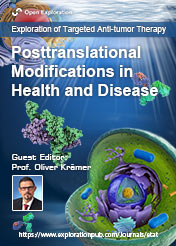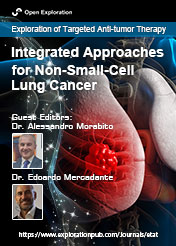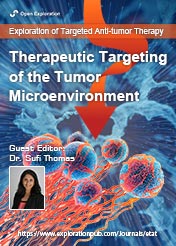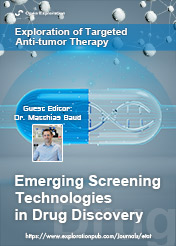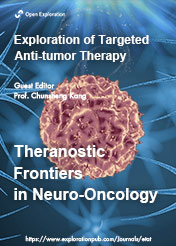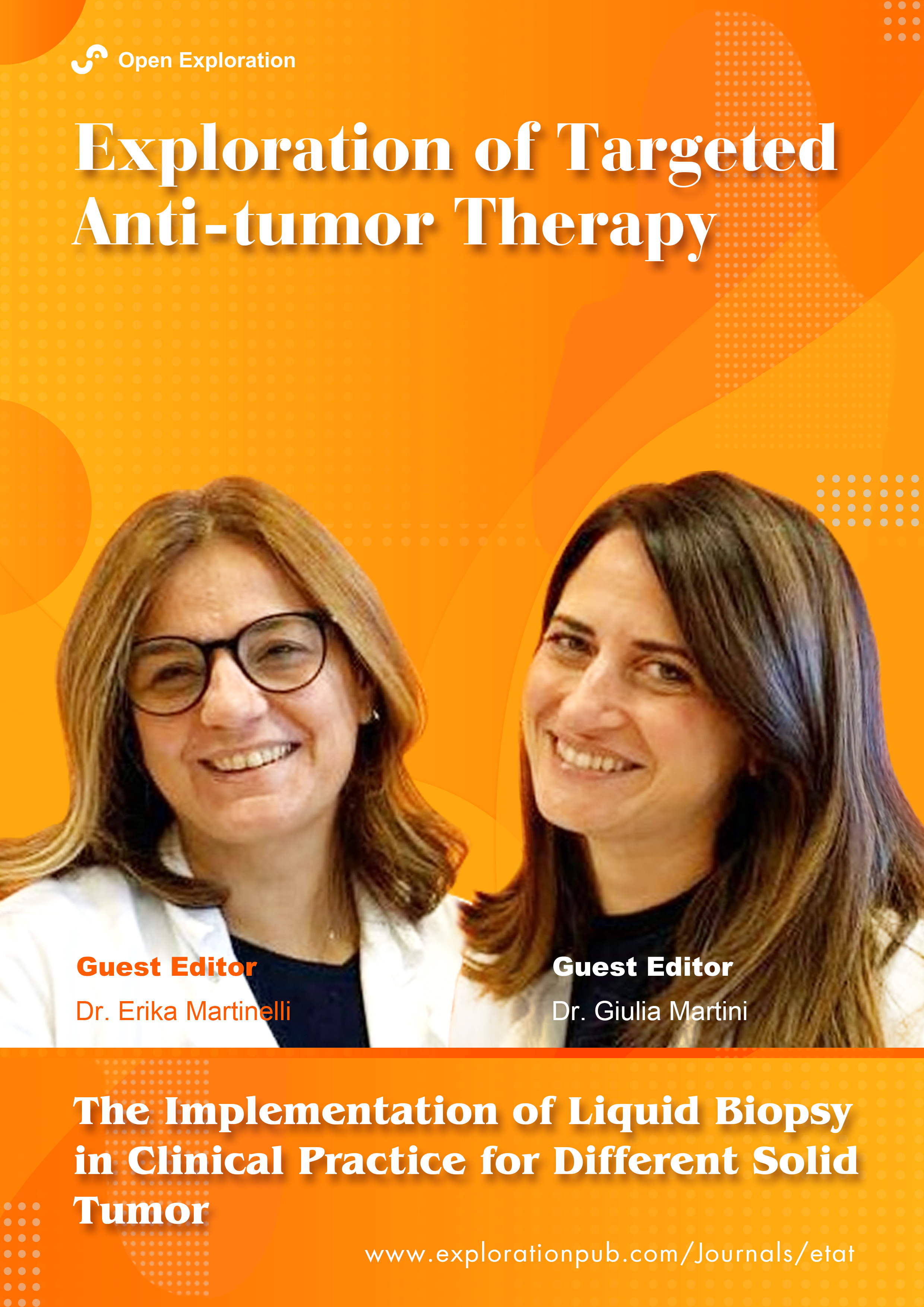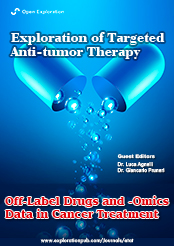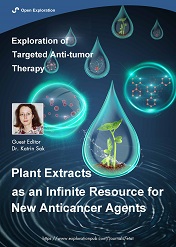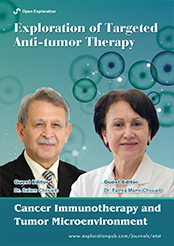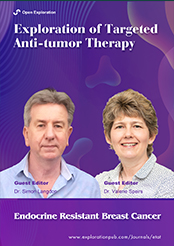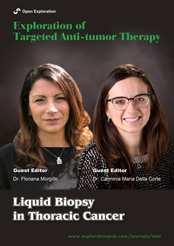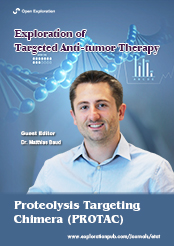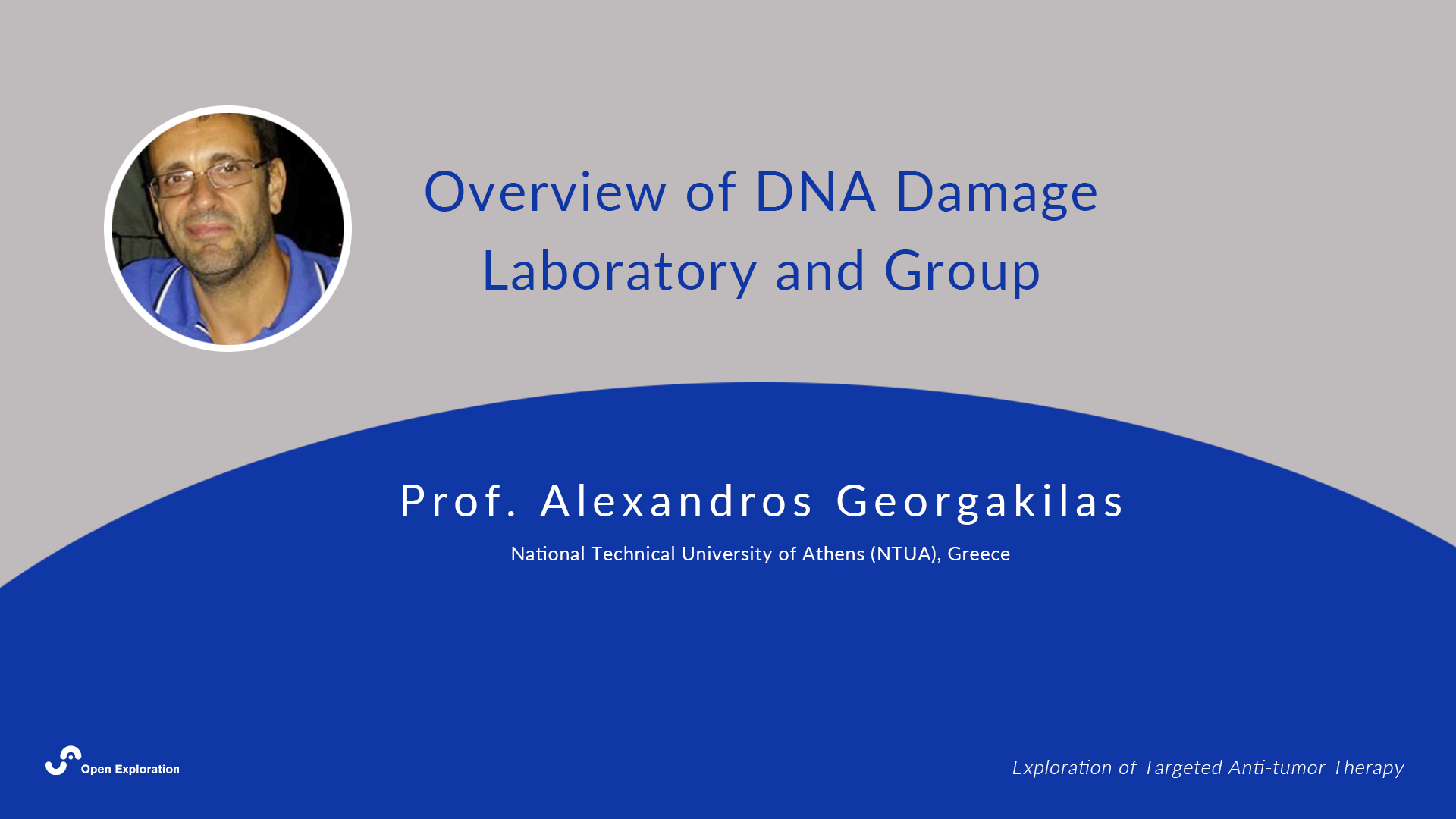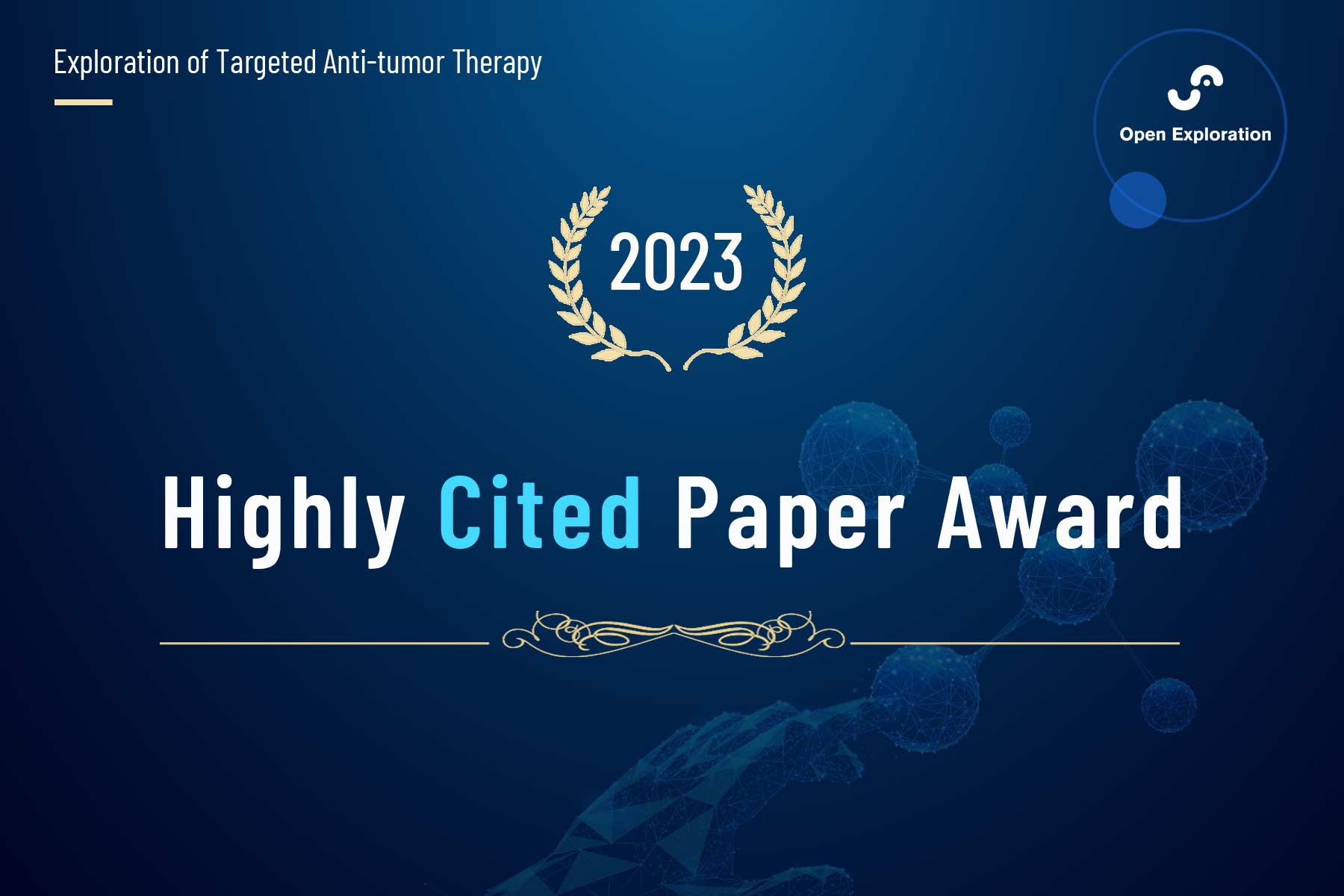-
Exploration of Targeted Anti-tumor Therapy
eISSN: 2692-3114EiC: Nicola Normanno, MD, President of Italian Cancer Society (SIC)Frequency: BimonthlyAPC: No Article Processing Charge before January 31, 2025Publishing Model: Open AccessPeer Review Model: Single BlindArticles Tri-specific killer engager: unleashing multi-synergic power against cancerOpen AccessReviewCancer continues to be a global health concern, necessitating innovative solutions for treatment. Tri-specific killer engagers (TriKEs) have emerged as a promising class of immunotherapeutic agents, [...] Read more.Peeranut Winidmanokul ... Seiji OkadaPublished: April 25, 2024 Explor Target Antitumor Ther. 2024;5:432–448
Tri-specific killer engager: unleashing multi-synergic power against cancerOpen AccessReviewCancer continues to be a global health concern, necessitating innovative solutions for treatment. Tri-specific killer engagers (TriKEs) have emerged as a promising class of immunotherapeutic agents, [...] Read more.Peeranut Winidmanokul ... Seiji OkadaPublished: April 25, 2024 Explor Target Antitumor Ther. 2024;5:432–448
DOI: https://doi.org/10.37349/etat.2024.00227
This article belongs to the special issue Novel Strategies and Targets for Immunotherapy of Cancer Spheroids and organoids derived from colorectal cancer as tools for in vitro drug screeningOpen AccessReviewColorectal cancer (CRC) is a heterogeneous disease. Conventional two-dimensional (2D) culture employing cell lines was developed to study the molecular properties of CRC in vitro. Although these cel [...] Read more.Sahira Syamimi Ahmad Zawawi ... Marahaini MusaPublished: April 25, 2024 Explor Target Antitumor Ther. 2024;5:409–431
Spheroids and organoids derived from colorectal cancer as tools for in vitro drug screeningOpen AccessReviewColorectal cancer (CRC) is a heterogeneous disease. Conventional two-dimensional (2D) culture employing cell lines was developed to study the molecular properties of CRC in vitro. Although these cel [...] Read more.Sahira Syamimi Ahmad Zawawi ... Marahaini MusaPublished: April 25, 2024 Explor Target Antitumor Ther. 2024;5:409–431
DOI: https://doi.org/10.37349/etat.2024.00226
This article belongs to the special issue Emerging Screening Technologies in Drug Discovery Cancer symptom cluster research in pediatric oncology: a work in progressOpen AccessPerspectiveIn the 21st century, advances in basic research have provided new insights in the field of pediatric oncology. Pediatric patients tend to experience higher levels of distressing symptoms, which toge [...] Read more.Luciana Chain Veronez, Luís Carlos Lopes-JúniorPublished: April 24, 2024 Explor Target Antitumor Ther. 2024;5:400–408
Cancer symptom cluster research in pediatric oncology: a work in progressOpen AccessPerspectiveIn the 21st century, advances in basic research have provided new insights in the field of pediatric oncology. Pediatric patients tend to experience higher levels of distressing symptoms, which toge [...] Read more.Luciana Chain Veronez, Luís Carlos Lopes-JúniorPublished: April 24, 2024 Explor Target Antitumor Ther. 2024;5:400–408
DOI: https://doi.org/10.37349/etat.2024.00225 Alteration of glucose metabolism and expression of glucose transporters in ovarian cancerOpen AccessReviewAerobic glycolysis also known as the Warburg effect, remains a hallmark of various cancers, including ovarian cancer. Cancer cells undergo metabolic changes to sustain their tumorigenic properties a [...] Read more.Fatima Ben Ali ... Rabii Ameziane El HassaniPublished: April 24, 2024 Explor Target Antitumor Ther. 2024;5:384–399
Alteration of glucose metabolism and expression of glucose transporters in ovarian cancerOpen AccessReviewAerobic glycolysis also known as the Warburg effect, remains a hallmark of various cancers, including ovarian cancer. Cancer cells undergo metabolic changes to sustain their tumorigenic properties a [...] Read more.Fatima Ben Ali ... Rabii Ameziane El HassaniPublished: April 24, 2024 Explor Target Antitumor Ther. 2024;5:384–399
DOI: https://doi.org/10.37349/etat.2024.00224
This article belongs to the special issue Recent Approaches in Tumor Metabolism Improving single nucleotide polymorphisms genotyping accuracy for dihydropyrimidine dehydrogenase testing in pharmacogeneticsOpen AccessCase ReportFluoropyrimidines, crucial in cancer treatment, often cause toxicity concerns even at standard doses. Toxic accumulation of fluoropyrimidine metabolites, culminating in adverse effects, can stem fro [...] Read more.Annalaura Montella ... Mario CapassoPublished: April 24, 2024 Explor Target Antitumor Ther. 2024;5:374–383
Improving single nucleotide polymorphisms genotyping accuracy for dihydropyrimidine dehydrogenase testing in pharmacogeneticsOpen AccessCase ReportFluoropyrimidines, crucial in cancer treatment, often cause toxicity concerns even at standard doses. Toxic accumulation of fluoropyrimidine metabolites, culminating in adverse effects, can stem fro [...] Read more.Annalaura Montella ... Mario CapassoPublished: April 24, 2024 Explor Target Antitumor Ther. 2024;5:374–383
DOI: https://doi.org/10.37349/etat.2024.00223
This article belongs to the special issue Molecular Diagnosis and Personalized Therapy of Cancer Tumor metabolism in pheochromocytomas: clinical and therapeutic implicationsOpen AccessReviewPheochromocytomas and paragangliomas (PPGLs) have emerged as one of the most common endocrine tumors. It epitomizes fascinating crossroads of genetic, metabolic, and endocrine oncology, providing a [...] Read more.Mohammad Sadiq Jeeyavudeen ... Joseph M. PappachanPublished: April 24, 2024 Explor Target Antitumor Ther. 2024;5:349–373
Tumor metabolism in pheochromocytomas: clinical and therapeutic implicationsOpen AccessReviewPheochromocytomas and paragangliomas (PPGLs) have emerged as one of the most common endocrine tumors. It epitomizes fascinating crossroads of genetic, metabolic, and endocrine oncology, providing a [...] Read more.Mohammad Sadiq Jeeyavudeen ... Joseph M. PappachanPublished: April 24, 2024 Explor Target Antitumor Ther. 2024;5:349–373
DOI: https://doi.org/10.37349/etat.2024.00222
This article belongs to the special issue Recent Approaches in Tumor MetabolismSpecial Issues Comprehensive Immunotherapy of Solid Tumors
Comprehensive Immunotherapy of Solid TumorsDr. Michela Valeria Rita Starace
Submission Deadline: October 31, 2024
Published Articles: 0
 Advances in Cancer Genomics and Therapeutic Targets
Advances in Cancer Genomics and Therapeutic TargetsProf. Apostolos Zaravinos
Submission Deadline: October 31, 2024
Published Articles: 0
 Molecular Mechanisms and Intervention Options in Metastatic Spread of Cancer
Molecular Mechanisms and Intervention Options in Metastatic Spread of CancerDr. Katrin Sak
Submission Deadline: August 31, 2024
Published Articles: 0
 Immunotherapy Strategies for Non-small Cell Lung Cancer
Immunotherapy Strategies for Non-small Cell Lung CancerProf. Stergios Boussios Prof. Matin Sheriff
Submission Deadline: July 31, 2024
Published Articles: 0
 Use of Different Radiation Treatment Modalities in Cancer Therapy: The Role of Inflammation and Immune Response
Use of Different Radiation Treatment Modalities in Cancer Therapy: The Role of Inflammation and Immune ResponseProf. Alexandros Georgakilas
Submission Deadline: June 10, 2024
Published Articles: 0
 Immune Checkpoint Therapy and Biomarkers in Cancer
Immune Checkpoint Therapy and Biomarkers in CancerProf. Eyad Elkord
Submission Deadline: May 31, 2024
Published Articles: 0
 Emerging Molecular Targets and Therapies of Genitourinary Tumors
Emerging Molecular Targets and Therapies of Genitourinary TumorsAlcides Chaux
Submission Deadline: April 30, 2024
Published Articles: 0
 Mechanisms of Targeted Therapy Resistance and Reversal Strategies
Mechanisms of Targeted Therapy Resistance and Reversal StrategiesProf. Pier Paolo Piccaluga
Submission Deadline: April 30, 2024
Published Articles: 0
 Current Innovative Cancer Treatment
Current Innovative Cancer TreatmentProf. Salem Chouaib Dr. Ghazi Jerbi
Submission Deadline: February 29, 2024
Published Articles: 0
 Cancer Epigenetics: Implications for Novel Therapeutic Strategies
Cancer Epigenetics: Implications for Novel Therapeutic StrategiesProf. Mingzhou Guo
Submission Deadline: July 31, 2024
Published Articles: 1
 Therapeutic Targeting of Tumor Metabolism
Therapeutic Targeting of Tumor MetabolismDr. Fátima Martel
Submission Deadline: December 31, 2023
Published Articles: 1
 Recent Approaches in Tumor Metabolism
Recent Approaches in Tumor MetabolismProf. Le Nguyen Quoc Khanh
Submission Deadline: October 31, 2023
Published Articles: 2
 Novel Insights into Immunotherapy Targeting Tumor Microenvironment in Cancer
Novel Insights into Immunotherapy Targeting Tumor Microenvironment in CancerProf. Hailin Tang
Submission Deadline: October 31, 2023
Published Articles: 2
 Molecular Diagnosis and Personalized Therapy of Cancer
Molecular Diagnosis and Personalized Therapy of CancerProf. Monica Fedele Prof. Andrea Vecchione
Submission Deadline: May 31, 2024
Published Articles: 1
 Molecular Targeted Therapy for Cancer
Molecular Targeted Therapy for CancerProf. Wei-Lin Jin Prof. Xing-Chun Gao
Submission Deadline: August 31, 2023
Published Articles: 2
 Novel Strategies and Targets for Immunotherapy of Cancer
Novel Strategies and Targets for Immunotherapy of CancerProf. Seiji Okada
Submission Deadline: September 30, 2023
Published Articles: 9
 Innovative Strategies to Target Triple-negative Breast Cancer
Innovative Strategies to Target Triple-negative Breast CancerDr. Laura Cerchia Dr. Simona Camorani
Submission Deadline: May 31, 2023
Published Articles: 7
 Posttranslational Modifications in Health and Disease
Posttranslational Modifications in Health and DiseaseProf. Oliver Krämer
Submission Deadline: May 31, 2024
Published Articles: 4
 Integrated Approaches for Non-Small-Cell Lung Cancer
Integrated Approaches for Non-Small-Cell Lung CancerDr. Alessandro Morabito Dr. Edoardo Mercadante
Submission Deadline: December 31, 2023
Published Articles: 4
 Therapeutic Targeting of the Tumor Microenvironment
Therapeutic Targeting of the Tumor MicroenvironmentDr. Sufi Thomas
Submission Deadline: June 30, 2023
Published Articles: 7
 Biomarkers for Personalized and Precise Cancer Diagnosis and Treatment
Biomarkers for Personalized and Precise Cancer Diagnosis and TreatmentDr. Arun Seth
Submission Deadline: January 20, 2023
Published Articles: 8
 Emerging Screening Technologies in Drug Discovery
Emerging Screening Technologies in Drug DiscoveryDr. Matthias Baud
Submission Deadline: December 31, 2023
Published Articles: 3
 Artificial Intelligence for Precision Oncology
Artificial Intelligence for Precision OncologyDr. Alfonso Reginelli Dr. Valerio Nardone
Submission Deadline: March 31, 2023
Published Articles: 15
 Theranostic Frontiers in Neuro-Oncology
Theranostic Frontiers in Neuro-OncologyProf. Chunsheng Kang
Submission Deadline: August 31, 2022
Published Articles: 5
 The Implementation of Liquid Biopsy in Clinical Practice for Different Solid Tumor
The Implementation of Liquid Biopsy in Clinical Practice for Different Solid TumorDr. Erika Martinelli Dr. Giulia Martini
Submission Deadline: May 20, 2022
Published Articles: 5
 The Role of Bcl-2 Family Proteins in Cancer Progression and Their Relevance to Cancer Therapy
The Role of Bcl-2 Family Proteins in Cancer Progression and Their Relevance to Cancer TherapyDr. Donatella Del Bufalo Dr. Germain Gillet
Submission Deadline: November 30, 2021
Published Articles: 5
 Gene Delivery Approach to Fight Cancer
Gene Delivery Approach to Fight CancerProf. Xiangyang Shi
Submission Deadline: February 28, 2022
Published Articles: 5
 Antibody-Drug Conjugates
Antibody-Drug ConjugatesDr. Francesco Bertoni Dr. Anastasios Stathis
Submission Deadline: October 31, 2021
Published Articles: 6
 Off-Label Drugs and -Omics Data in Cancer Treatment
Off-Label Drugs and -Omics Data in Cancer TreatmentDr. Luca Agnelli Dr. Giancarlo Pruneri
Submission Deadline: June 30, 2021
Published Articles: 5
